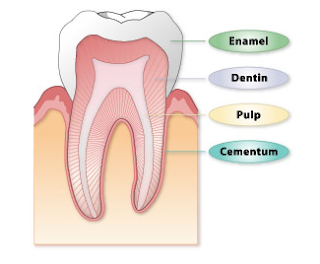Toothache

A toothache or tooth pain is most often caused when the nerve to a tooth is irritated. Risk factors for a toothache include dental infection, gum disease, plaque, dental decay, injury, cracked teeth, poorly placed fillings or crowns, failing or leaking fillings or crowns, loss of a tooth (including tooth extractions), etc. There are instances, however, where pain originating from outside the mouth radiates to the mouth, thus giving the impression that the pain is of tooth origin. Occasionally, heart problems can give a sensation of tooth pain. Pregnancy can also be a risk for tooth problems that lead to pain. What Causes a Toothache? Toothaches occur from inflammation of the central portion of the tooth called pulp. The pulp contains nerve endings that are very sensitive to pain. Inflammation to the pulp, or pulpitis, can be caused by anything that has contact with the tooth. Common causes of tooth pain are the following: · ...


